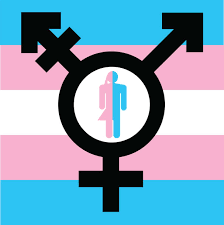The term "sissy" has a multifaceted legacy, often eliciting a spectrum of reactions ranging from playful banter to harsh ridicule. In contemporary dialogue, it serves various functions, reflecting both cultural attitudes and personal identities. This article aims to explore the meaning of "sissy," its historical roots, its modern applications, and the nuances that define its use today. By understanding the term’s evolution and contextual significance, we can better navigate conversations surrounding gender expression and identity.
What Does "Sissy" Really Mean in Everyday Language?
In everyday conversation, "sissy" is often used to describe someone—typically a boy or man—who is perceived as weak, overly emotional, or not conforming to traditional masculine roles. It can carry connotations of fragility, suggesting that the individual doesn’t measure up to societal standards of toughness or stoicism. In this light, calling someone a "sissy" can be a way to criticize their behavior or demeanor, often serving as a means to reinforce gender norms.What Does Transgender Mean
However, the term can also be employed more lightheartedly among friends or peers, in a teasing or affectionate manner. In these contexts, it lacks the bite of insult and instead reflects camaraderie. This dual nature of the term makes it both interesting and complex; while it can be damaging when used to demean someone, it can also foster a sense of fun and friendship in a more relaxed environment.
A Brief History of the Term "Sissy" Over the Years
The term "sissy" has roots that can be traced back to the late 19th century. Derived from "sister," it was initially a diminutive term, often used to describe young boys who engaged in behaviors considered typical of girls. Over time, the term took on a derogatory tone, equating femininity with weakness and establishing a clear boundary for acceptable masculine behavior. This shift allowed "sissy" to become a verbal weapon in the arsenal of those enforcing rigid gender roles.
Throughout the 20th century, the term’s usage continued to evolve, particularly as discussions around masculinity and femininity matured. In some subcultures, the term began to lose its purely negative connotation, as individuals reclaimed it in a way that emphasized a broader spectrum of gender expression. The term “sissy” now encompasses a variety of meanings, depending largely on the context in which it is used.
The Different Uses of "Sissy" in Modern Conversations
In modern conversations, "sissy" can be applied in various contexts, from casual banter among friends to more serious discussions about masculinity. In playful settings, friends might use "sissy" to rib one another about being overly sensitive or reluctant to engage in traditionally masculine activities, like sports or roughhousing. This lighthearted use is often accompanied by laughter and mutual understanding, providing a bonding moment rather than a point of contention.
On the other hand, "sissy" can also surface in more charged discussions, particularly when addressing issues of toxic masculinity and gender norms. Here, the term serves as a critique of societal expectations surrounding masculinity, illustrating how such pressures can harm individuals who don’t conform. In these conversations, "sissy" becomes a focal point for examining the limitations placed on emotional expression and vulnerability in men and boys, advocating for a more nuanced understanding of gender.
Sissy vs. Sissy Boy: Understanding the Nuances
While "sissy" and "sissy boy" may seem interchangeable, there are subtle distinctions worth noting. "Sissy" can refer to anyone who embodies traits considered soft or feeble, regardless of age. It’s a broad term that can be playful or derogatory, depending on the situation. Conversely, "sissy boy" is often specifically aimed at young boys, reinforcing a sense of childishness or immaturity associated with the same behaviors.
The use of "sissy boy" can intensify the stigma attached to being sensitive or gentle, especially when used in a derogatory context. This term tends to evoke a stronger reaction, often further entrenching the idea that boys should adhere strictly to conventional masculine standards. Understanding these nuances helps in navigating conversations with sensitivity, allowing individuals to express themselves without fear of being labeled in a limiting way.
Why "Sissy" Can Be Both Playful and Offensive
The duality of "sissy" lies in its ability to oscillate between playful teasing and outright offense. In a friendly atmosphere, when used among peers who understand each other’s boundaries, "sissy" can foster camaraderie and humor. It serves to lighten the mood, allowing individuals to poke fun at one another’s quirks without any real malice involved. This playful use often emphasizes the absurdity of rigid gender norms, making it a tool for social bonding.
However, when wielded as an insult, "sissy" can be deeply hurtful. It reinforces damaging stereotypes about masculinity and femininity, often making individuals feel inadequate or ashamed for not fitting neatly into gender binaries. The impact of such language can be profound, leading to feelings of insecurity or self-doubt. This highlights the importance of context and intent when using the term, as it can easily cross the line from playful to offensive if not handled with care.
How "Sissy" is Used in Popular Culture and Media
In popular culture, "sissy" has appeared in various forms of media, often reflecting society’s changing attitudes toward gender roles. Films, television shows, and literature have used the term to critique traditional masculinity or highlight the absurdities of gender norms. Characters who embody "sissy" traits are sometimes portrayed as comedic relief, but they can also serve as powerful symbols of resistance against societal expectations.
In recent years, there has been a growing trend toward more nuanced portrayals of "sissies" in media, showing them as complex characters with their own strengths and vulnerabilities. This shift allows for a broader conversation about gender expression, encouraging viewers to reconsider their views on masculinity and femininity. By embracing and normalizing diverse representations, popular culture has the potential to challenge stereotypes and foster acceptance.
Embracing the Term: Positive Takes on Being a Sissy
With the rise of movements advocating for inclusivity and acceptance, many individuals have begun to embrace the label "sissy" as a badge of honor. This reclamation seeks to subvert the term’s traditional negative connotations, transforming it into a symbol of self-acceptance and authenticity. For some, identifying as a "sissy" allows them to celebrate traits that society may deem “weak” while promoting the value of emotional expression and vulnerability.
This positive rebranding encourages individuals to step outside societal confines, creating spaces where diverse forms of masculinity can flourish. By embracing the term, many hope to challenge and dismantle the stigma surrounding being sensitive or different, ultimately promoting a more inclusive understanding of gender identity. This movement towards acceptance highlights the importance of individual experiences and personal narratives in shaping the meaning of "sissy."
What You Should Know About Sissy and Gender Identity
Understanding "sissy" also requires an awareness of its relationship with gender identity. The term often intersects with discussions about gender fluidity and expression, suggesting that individuals do not have to conform to traditional male or female roles. For some, identifying as a "sissy" can reflect a non-binary or gender non-conforming identity, challenging the binary classification of gender altogether.
The conversation around "sissy" and gender identity is evolving, as more people recognize the importance of self-definition. By allowing individuals to express themselves authentically—regardless of societal expectations—we can create a more accepting environment for everyone. This understanding fosters compassionate discussions about gender, ultimately leading to a richer appreciation of the diverse experiences that make up human identity.
The term "sissy" encapsulates a range of meanings and emotions, traversing from playful camaraderie to serious critique of gender norms. Its historical evolution and modern interpretations reveal the complexities of masculinity, femininity, and gender identity in our society. As conversations surrounding these topics continue to grow, the way we use terms like "sissy" carries weight, reflecting our values and beliefs about gender expression. By fostering open dialogue, we can shift the narrative around "sissy" to empower individuals rather than diminish them.


